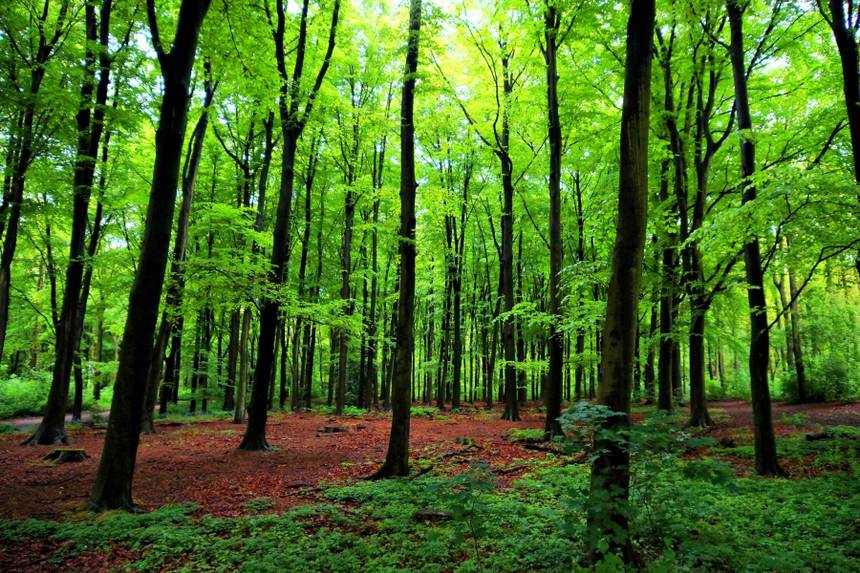Bill Cook, MSU Extension Forester/Biologist
Knowing Trees Tree identification is not only a satisfying part of nature study, it’s also crucial for diagnosing pest issues and matching planting to suitable sites..In Michigan’s wildland forests, there are about 75-85 tree species, depending upon where the line is drawn between a “tree” and a “shrub”. The number of species significantly increases when the urban / residential trees and ornamental varieties are counted. Trees are good ecological indicators of site productivity and ecological conditions. Trees are the dominant life form of forest systems. They pretty much determine what else grows on the site and which wildlife species will inhabit a particular place. Knowing the ecological requirements and implications of trees provides a more satisfying forest visit. Tree identification is just the first step.
However, it’s the forest dynamics that become more interesting, rather quickly. It takes some time and study to learn to “read the forest” like a forester. For northern Michigan, the Upper Peninsula Tree Identification website [uptreeid.com] is a good tool. The image sets have been recently updated to reflect the changes in computer technology since the website was first introduced in the late 1990s. The website also has an extensive forest health section, tied to particular tree species. There are about a dozen characteristics available to help identify trees. Learning which subset of characteristics to use for a particular tree is where practice and skill are needed. Some characteristics are seasonal, such as leaves, fruits, and flowers.
Most others are more year-round, such as twig and branching patterns, buds, bud scars, bark, tree form, site, and tree associates. For some trees, paper birch for instance, most people only need to look at the white, peeling bark. Easy, although, sometimes pale versions of quaking aspen have been mistaken for paper birch. Trees with acorns are one of several oaks. Most of our conifers carry needles year-round, but not all. Many people refer to all conifers as “pines” when, actually, most conifers are not pines. Pines make up about 44 percent of the conifer volume in Michigan (14 percent of total tree volume). Northern white-cedar is the most common conifer in Michigan. It’s not a pine! Neither are hemlocks, spruces, firs, tamaracks, or larches. Because there are only about a dozen common conifers (only four are pines!) in the forest, conifer ID is fairly easy.
It’s a good place to begin in order to build some confidence and skill. Another good tactic for beginners is learning the ten most common tree species first; sugar maple, red maple, white-cedar, red pine, white pine, northern red oak, quaking aspen, bigtooth aspen, black cherry, and hemlock. Once these trees are known, comparing them to unknown species will often make the identification process move quicker. For about five months, leaves are good tree ID characteristics. However, beware of the variability within a particular species. Size, shape, color, and other features can change from one part of a tree, or among trees of the same species due to site conditions and tree health. Using leaves to confirm a species ID allows an observer to more easily become familiar with year-round ID characteristics, such as bark, buds, branching patterns, et al.
Once a person becomes proficient at tree ID, then, like learning to read, a whole world of science, history, and ecology opens up. Our wildland forests have been shaped by historical practices, especially the over-harvesting and burning of a hundred years ago. That period set the stage for much of what we see today, as the forests have recovered. Forest management has done much to bring the forest resource to conditions that are now able to supply a wide range of goods and services. Forests are an essential resource for human survival. Their renewable nature provides a large measure of potential for human benefit, if properly cared for. Learning to identify some of the pieces goes a long way to a deeper understanding of the ever-changing forest puzzle.



